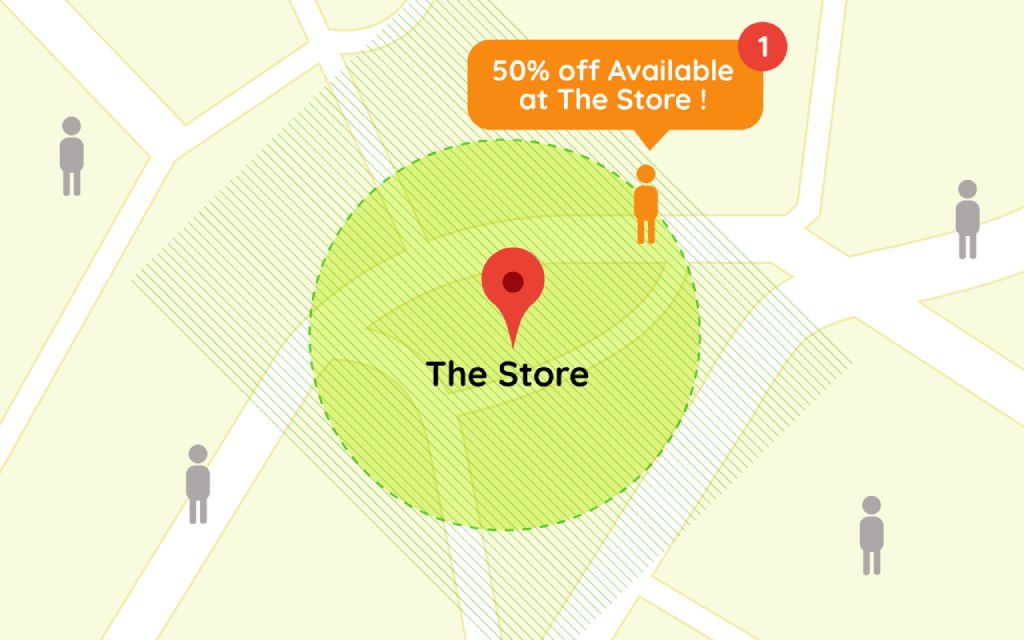There’s an old adage: quality over quantity. Every business certainly wants more customers, an increase in sales, and more products or services shipped. But there is, more than ever, something to be said for driving a more certain outcome...

There’s an old adage: quality over quantity. Every business certainly wants more customers, an increase in sales, and more products or services shipped. But there is, more than ever, something to be said for driving a more certain outcome with your marketing efforts. As many marketers know, the more qualified a customer, the more likely a sale will occur.
One of the more surefire ways of ensuring better marketing outcomes is by employing location-based advertising. This concept is interchangeably called “place-based advertising” or “geo location based advertising.” And it should be a cornerstone in your marketing stack.
As a strategy, marketers have noted, thanks to place-based advertising strategies:
86% increase in client base 84% increase in consumer engagementBut what is location based advertising? And how does location based advertising work? In this article, we’ll explore the ins and outs of location based marketing. We’ll also share some place based advertising examples for inspiration in your next marketing campaign.
How Does Location-Based Advertising Work?
One of the great benefits of our modern age is the abundance of data that we have at our fingertips. Even just a single generation ago, marketers were largely reliant on insights from focus groups, from prior results, and from their own gut when devising a marketing strategy.
But today, marketers can access everything from common customer persona information to demographic data collected and offered by social media platforms. The amount of data can be staggering. But if you know where to focus your efforts, you can unlock the power of place-based advertising with relative ease.
The easiest way to think of location-based advertising is through the lens of geographic specificity.

Location-Based Advertising Examples
For example, imagine a company wants to sell flood insurance coverage in the United States. It might be simplest for them to simply advertise to everyone in the United States. But there are many people in that category for whom flood insurance is wholly irrelevant. If the ad were served to the entire country, it would be irrelevant to the vast majority of prospective customers who see it.
Instead, the company might use location-based insights to their advantage. Their ad campaign might only display on social media or website banners to adults who live near a body of water. Or they could specify that the ad only runs to customers who live within a few miles of an ocean.
The company has used location-based advertising to ensure they are marketed only to relevant parties. By prioritizing quality over quantity in their campaign’s breadth, sales are prioritized over general awareness.
Foot Traffic Considerations
Another way to consider location-based advertising strategies is to consider customer foot traffic. Our above example uses a fairly broad level of geographic specificity (a zip code, town, or portion of an entire state). But digital platforms offer enormously specific data about where potential customers are and where they move during their day.
Consider GPS data, which nearly every mobile device user offers up as they browse the web, use apps, and more. These insights are commonly captured by advertising platforms to get a sense of foot traffic density, population shifts, commuting patterns, and more. And all of that data is worth its weight in gold to a marketer like you.
More Location-Based Advertising Examples
As an example for the above, imagine you run a network of pet grooming franchises around a major metro. Again, it would be simplest to activate your digital advertising pipeline to target everyone within a certain radius of your city. This would be location-based advertising in its most basic form.
But, with a little tweaking to the place-based advertising strategy, you can get really specific in who sees your ad. With GPS data, you can serve your ad to customers when they enter your store’s radius. This is commonly referred to as geofencing or proximity marketing.
By targeting your recipient, tailoring the message to make assumptions both about who and where they are, and serving it to them at strategically convenient times, you can grow the likelihood of a potential sale.
Part of a rock-solid location based advertising strategy is also to have a mechanism to turn it off. With a place-based advertising plan, customers no longer see an ad once they move outside of a set radius. This helps stymie budget waste and focus your marketing dollars on more likely conversions.
Partner With a Geo Location-Based Advertising Leader
Now is the best time to roll out a place-based marketing strategy. AllOver Media has helped customers devise and perfect robust and results-oriented geo location based advertising strategies. Looking for some help with Geo-Fencing? See how AllOver Media can help!
The post The Importance of Place-Based Advertising in Your Customer Engagement Pipeline appeared first on AllOver Media.









